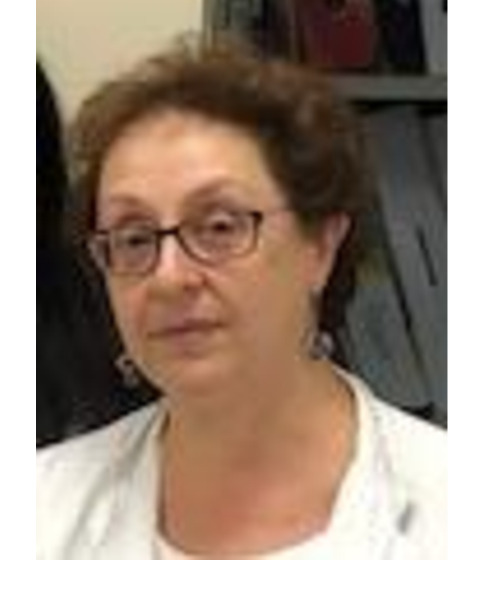Myeloma Genomics and Microenvironment and immune profiling
The significance of complex Karyotype in Multiple Myeloma
P-227: The significance of complex Karyotype in Multiple Myeloma
Wednesday, September 25, 2024

Chrysavgi Elissavet Lalagianni (she/her/hers)
Hematology Director
George Papanikolaou Hopsital
Thessaloniki, Thessaloniki, Greece
Introduction: Cytogenetic abnormalities in patients with multiple myeloma play undoubtedly a crucial role in terms of disease staging and prognosis. While hyperploidy is considered a standard risk factor and hypodiploidy an adverse one, the significance of the number and type of chromosomal abnormalities is unclear. Although complex karyotype (both quantitative and structural abnormalities are required) is not considered as a high risk disease factor in myeloma, in contrast to AML, it has been reported to affect prognosis. Additionally, the coexistence /cumulative role of cytogenetic abnormalities detected from FISH studies in complex karyotype remains vague.
Methods: We retrospectively studied 37 patients (women n=14, men n=23) with a median age of 64 (40-82) who had a complex karyotype and were treated in our center during the last 6 years. All patients underwent classic bone marrow chromosomal analysis, whereas 33/37 patients had also a result from FISH analysis.
Results: Hyperdiploidy (48-65 chromosomes) was found in 24 patients, whereas hypodiploidy (< 44 chromosomes) was found in 13. Concurrent structural abnormalities were diverse and were more frequent in hyplodiploidy with a median number of 6 (2-9) abnormalities found per patient, whereas in hyperdiploidy the respective median number was 3 (1-10). Interestingly, 9 patients with hyperdiploidy had only 1 structural abnormality. Furthermore, high-risk cytogenetic abnormalities detected by FISH were scarcer in patients with hyperdiploidy 7/21 (33%, 1p/1q n= 5, del17p n=2) versus 9/12 (75%, 1p/1q: 9, IGH/FGFR3: 2, IGH/MAF: 2, del17p: 4) of patients with hypodiploidy, p=0.02.
As expected, disease outcome was worse in patients with hypodiploidy compared to patients with hyperdiploidy. Median PFS was 15 vs 31 months (p=0.003) and median OS was 19 vs 92 months respectively, (p=0.004). Notably, and in contrast to bibliographic reports, patients with only 1 structural abnormality did not have a more favorable prognosis. Concerning patients < 70 years old, PFS and OS were found significantly improved in those that underwent autologous stem cell transplant (ASCT), whereas no other factors effecting prognosis were found statistically significant from the multivariate analysis.
Conclusions: Among myeloma patients with complex karyotype, hypodiploidy compared to hyperdiploidy is a more complex disease genetically, with more concurrent structural abnormalities and coexistence of high-risk FISH abnormalities in the majority of patients, thus explaining its inferior prognosis. Structural abnormalities were fewer in hyperploidy, as were high-risk FISH abnormalities. Finally, ASCT enhances the disease outcome in patients with complex karyotype.
Methods: We retrospectively studied 37 patients (women n=14, men n=23) with a median age of 64 (40-82) who had a complex karyotype and were treated in our center during the last 6 years. All patients underwent classic bone marrow chromosomal analysis, whereas 33/37 patients had also a result from FISH analysis.
Results: Hyperdiploidy (48-65 chromosomes) was found in 24 patients, whereas hypodiploidy (< 44 chromosomes) was found in 13. Concurrent structural abnormalities were diverse and were more frequent in hyplodiploidy with a median number of 6 (2-9) abnormalities found per patient, whereas in hyperdiploidy the respective median number was 3 (1-10). Interestingly, 9 patients with hyperdiploidy had only 1 structural abnormality. Furthermore, high-risk cytogenetic abnormalities detected by FISH were scarcer in patients with hyperdiploidy 7/21 (33%, 1p/1q n= 5, del17p n=2) versus 9/12 (75%, 1p/1q: 9, IGH/FGFR3: 2, IGH/MAF: 2, del17p: 4) of patients with hypodiploidy, p=0.02.
As expected, disease outcome was worse in patients with hypodiploidy compared to patients with hyperdiploidy. Median PFS was 15 vs 31 months (p=0.003) and median OS was 19 vs 92 months respectively, (p=0.004). Notably, and in contrast to bibliographic reports, patients with only 1 structural abnormality did not have a more favorable prognosis. Concerning patients < 70 years old, PFS and OS were found significantly improved in those that underwent autologous stem cell transplant (ASCT), whereas no other factors effecting prognosis were found statistically significant from the multivariate analysis.
Conclusions: Among myeloma patients with complex karyotype, hypodiploidy compared to hyperdiploidy is a more complex disease genetically, with more concurrent structural abnormalities and coexistence of high-risk FISH abnormalities in the majority of patients, thus explaining its inferior prognosis. Structural abnormalities were fewer in hyperploidy, as were high-risk FISH abnormalities. Finally, ASCT enhances the disease outcome in patients with complex karyotype.